Tokyo is one of the world’s largest metropolises, and certainly one of the most fascinating with the mix of centuries-old Japanese traditions and modern Japan’s success, architecture and common use of technology that you will easily notice as a tourist.
There are approximately 30 million people living in the Tokyo-Yokohama area, and the vibrant street life is 24/7 in several places. Shopping and restaurants offering the tasty Japanese cuisine are of course great ways to enjoy Tokyo, as is walking the streets getting impressions.
Tokyo is a mix of a very modern city where everything can be bought and everything seems feasible. There are shopping malls everywhere, yet there is never a long way to Japan’s beautiful temples and traditions. For example, in the middle of the city’s high-rise buildings there is a large oasis, which is the grounds of the Japanese imperial palace, and from here the country has been ruled from generations.
Tokyo also has several green areas, which are particularly seeworthy when the Japanese cherry blossoms. That, the tasty and exciting Japanese food and meeting at once the historic and the modern will make a visit to the imperial capital unforgettable. Do consider some day trips as well to Mount Fuji, the buddha of Kamakura or the old city of Nikko.
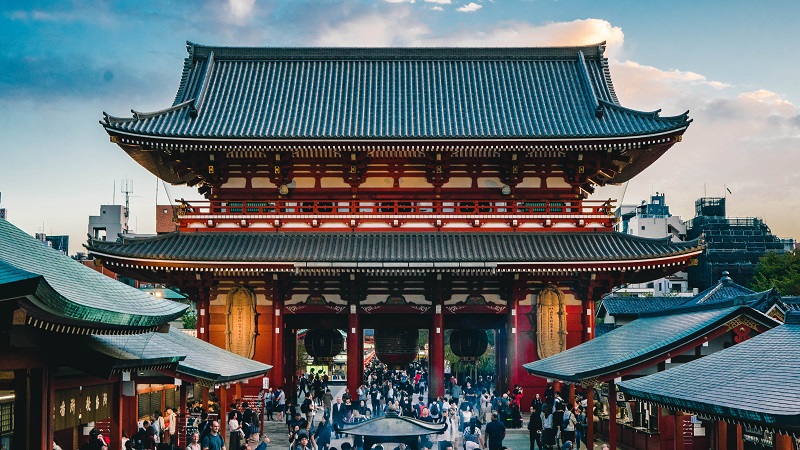
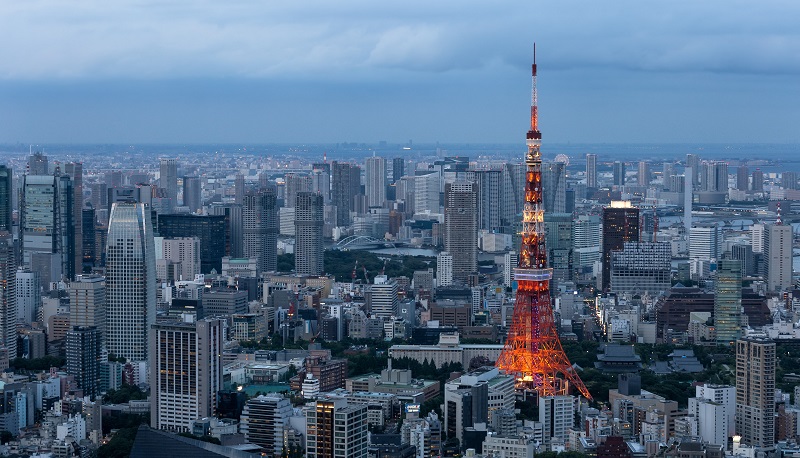
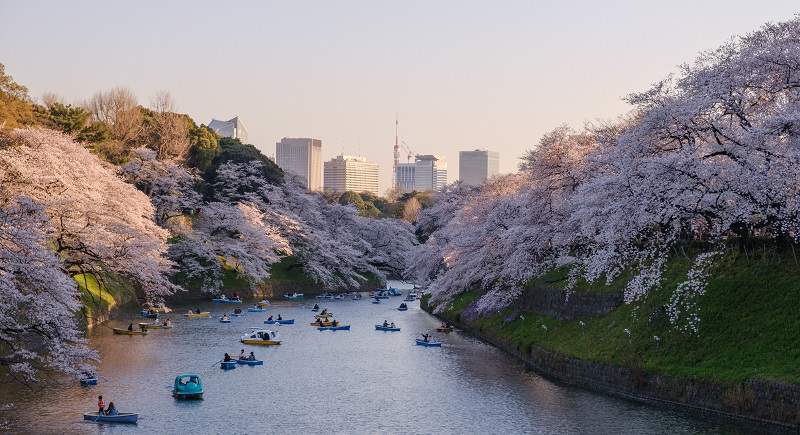
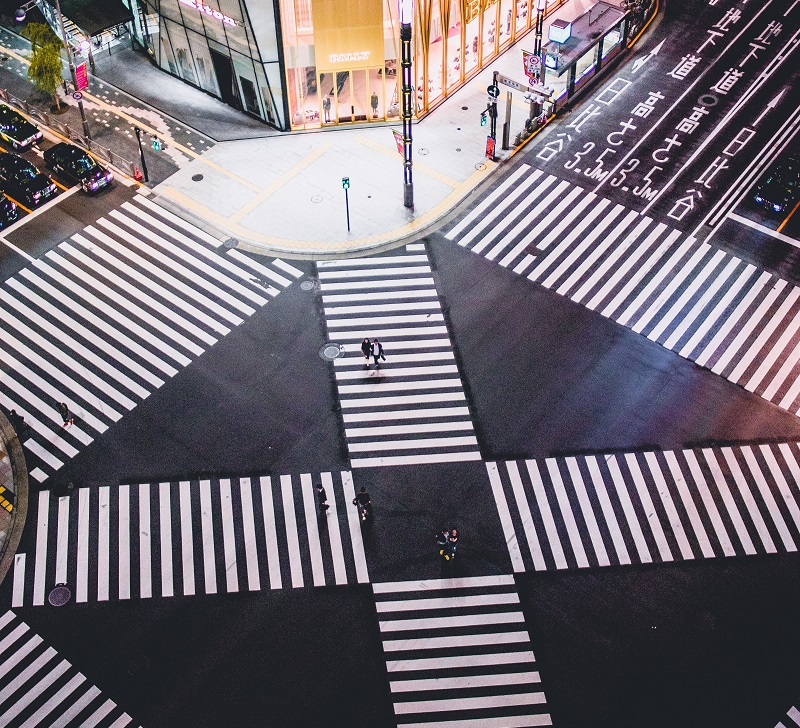
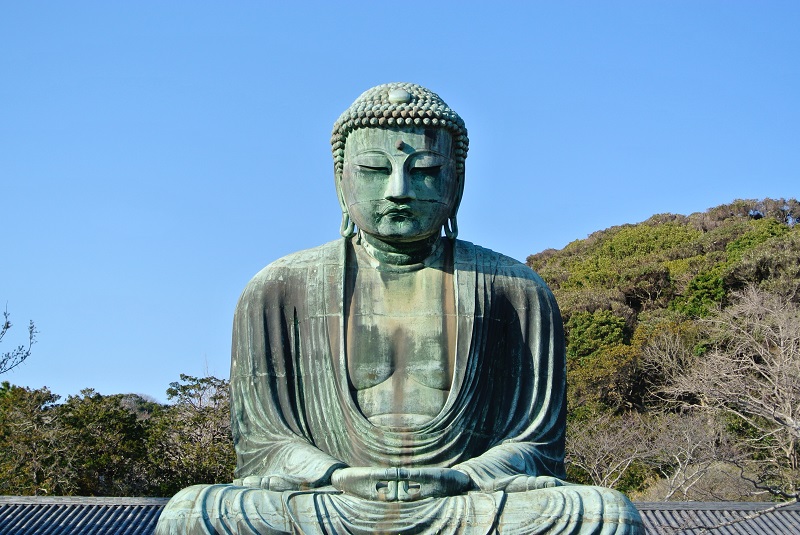
Until the 16th century, Tokyo was a small fishing village named Edo. The country’s capital was Kyoto to the west, but in reality Japan was ruled by local warlords who tried to fight each other.
The year 1603 became a landmark for Tokyo’s history and significance. It was this year that warlord Ieyasu Tokugawa gained control of Edo and wanted to make it Japan’s most powerful city. Tokugawa quickly gained wide powers when the emperor made him the military leader titled Shogun.
Tokugawa commanded the country’s warlords to stay a large part of Tokyo, and their families were to stay firm in the city. It consolidated for the first time a national power in one place, and at the same time brought about a rapid development of the city. Edo became not only Japan, but the world’s largest city with more than 1 million inhabitants.
In 1638, Ieyasu Tokugawa’s grandson, who was also a shogun, almost completely closed Japan to the outside world. Thus, virtually no merchant ships arrived in the country during the more than 200 years of isolation.
In 1657, a large fire ravaged Edo, and many of the densely populated neighborhoods, which consisted mainly of wooden houses, were destroyed. In all, about half of the city burned.
The development of Edo came about because areas in the city were dominated by different layers – a structure that is still seen today when, for example, buying books or electronics, which you find concentrated in certain neighborhoods.
In 1853, an American navy arrived in Japan. It was led by Commander Matthew Perry and anchored in the Gulf of Tokyo. It was supposed to break Edos and Japan’s isolation, and it succeeded. Trade ports were opened, and with the influx of foreigners, Japanese society had an outside influence that, for good reason, had not looked like for centuries.
The feudal rule of the Tokugawa Shoguns was broken with the changes of society, and power was conferred on Emperor Meiji, who moved his residence from Kyoto to Edo, named Tokyo, meaning “the eastern capital.” The old feudal castle now became an imperial residence, which it still remains in today’s Japan.
In the decades before and around 1900, Japan underwent strong industrialization and militarization. The country won local wars against China and Russia, and Taiwan, Korea and Micronesia were conquered by Japan and subject to the government of Tokyo. During the same period, industrial development led to a very large influx from all over Japan to the metropolitan Tokyo, which had more than 2 million inhabitants in the early 1920s.
September 1, 1923, a major earthquake hit Tokyo and the Kanto region. Half of the city was devastated by the earthquake and more than 1 million people were made homeless. The city was facing a tremendous reconstruction work that began immediately after the quake. Ancient Tokyo preserved its narrow streets and the old city plan, while the outer areas were built with more modern urban planning. The city boundaries were expanded so that completely new areas could be expanded as there was still some relocation to the capital.
A change to the city’s shopping structure was implemented. Instead of the former personally operated specialty stores, Western-inspired department stores were now being built – among other things. as it continues to be seen at the major railway nodes.
After the great build-up after the earthquake in 1923, Tokyo was in ruins again in 1945. It was with American bombing in the final phase of World War II, and once again within a few years the city was almost to be rebuilt.
After 1945 the city was quickly rebuilt, in the center now also after modern planning. Continued industrialization took place and the Japanese economy flourished and was among the most successful in the world for many decades to come. Tokyo’s population grew with the city’s success as both an industrial and administrative center.
Tokyo’s metro was greatly expanded and the famous Shinkansen express train lines from Tokyo to all parts of Japan were built, starting with the line to Osaka. At the same time, highways were built through Tokyo and to and from the city’s many suburbs.
For the outside world and in Japan, the organization of the 1964 Tokyo Olympics became a picture of the Japanese financial success. Japan was once again established as one of the world’s leading economies – a position that has been maintained ever since.

Overview of Tokyo
Tokyo is one of the world’s largest metropolises, and certainly one of the most fascinating with the mix of centuries-old Japanese traditions and modern Japan’s success, architecture and common use of technology that you will easily notice as a tourist.
There are approximately 30 million people living in the Tokyo-Yokohama area, and the vibrant street life is 24/7 in several places. Shopping and restaurants offering the tasty Japanese cuisine are of course great ways to enjoy Tokyo, as is walking the streets getting impressions.
About the upcoming Tokyo travel guide
About the travel guide
The Tokyo travel guide gives you an overview of the sights and activities of the Japanese city. Read about top sights and other sights, and get a tour guide with tour suggestions and detailed descriptions of all the city’s most important churches, monuments, mansions, museums, etc.
Tokyo is waiting for you, and at vamados.com you can also find cheap flights and great deals on hotels for your trip. You just select your travel dates and then you get flight and accommodation suggestions in and around the city.
Read more about Tokyo and Japan
Buy the travel guide
Click the “Add to Cart” button to purchase the travel guide. After that you will come to the payment, where you enter the purchase and payment information. Upon payment of the travel guide, you will immediately receive a receipt with a link to download your purchase. You can download the travel guide immediately or use the download link in the email later.
Use the travel guide
When you buy the travel guide to Tokyo you get the book online so you can have it on your phone, tablet or computer – and of course you can choose to print it. Use the maps and tour suggestions and you will have a good and content-rich journey.
Ginza • Shinjuku • Cherry Blossom • Temples • Sumo Wrestling • Fuji

Overview of Tokyo
Tokyo is one of the world’s largest metropolises, and certainly one of the most fascinating with the mix of centuries-old Japanese traditions and modern Japan’s success, architecture and common use of technology that you will easily notice as a tourist.
There are approximately 30 million people living in the Tokyo-Yokohama area, and the vibrant street life is 24/7 in several places. Shopping and restaurants offering the tasty Japanese cuisine are of course great ways to enjoy Tokyo, as is walking the streets getting impressions.
About the upcoming Tokyo travel guide
About the travel guide
The Tokyo travel guide gives you an overview of the sights and activities of the Japanese city. Read about top sights and other sights, and get a tour guide with tour suggestions and detailed descriptions of all the city’s most important churches, monuments, mansions, museums, etc.
Tokyo is waiting for you, and at vamados.com you can also find cheap flights and great deals on hotels for your trip. You just select your travel dates and then you get flight and accommodation suggestions in and around the city.
Read more about Tokyo and Japan
Buy the travel guide
Click the “Add to Cart” button to purchase the travel guide. After that you will come to the payment, where you enter the purchase and payment information. Upon payment of the travel guide, you will immediately receive a receipt with a link to download your purchase. You can download the travel guide immediately or use the download link in the email later.
Use the travel guide
When you buy the travel guide to Tokyo you get the book online so you can have it on your phone, tablet or computer – and of course you can choose to print it. Use the maps and tour suggestions and you will have a good and content-rich journey.


Similar to Tokyo Travel Guide
There are no listings matching your search.
Reset